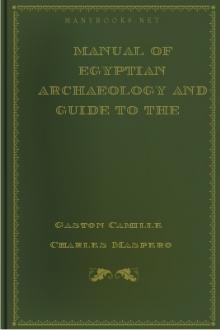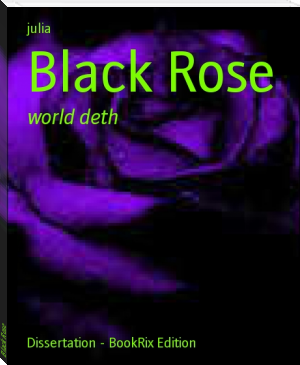Ancient America, in Notes on American Archaeology by John D. Baldwin (best thriller books to read .TXT) 📕

"It is in the form of a serpent, upward of 1000 feet in length, extended i
Read free book «Ancient America, in Notes on American Archaeology by John D. Baldwin (best thriller books to read .TXT) 📕» - read online or download for free at americanlibrarybooks.com
- Author: John D. Baldwin
- Performer: -
Read book online «Ancient America, in Notes on American Archaeology by John D. Baldwin (best thriller books to read .TXT) 📕». Author - John D. Baldwin
In Yucatan the old inhabitants were Mayas, and people using dialects related to theirs were numerous in Tabasco, Chiapa, Guatemala, and the neighboring districts, while all around the country were scattered communities supposed to be of Toltec origin, as their speech could not be classed with these dialects nor with that of the Aztecs. The most reasonable explanation of this condition of the people is that furnished by the old chronicles and traditions. The country must have been occupied, during successive periods, by different peoples, who are represented by these broken communities and unlike groups of language. When all the native writings still in existence shall have been translated, and especially when the multitude of inscriptions found in the ruins shall have been deciphered, we may be able to see in a clearer light the ruins, the people, and their history.
197-* See Appendix D.
IX.THE AZTEC CIVILIZATION.
If a clever gleaner of the curious and notable things in literature should write on the curiosities of historical speculation, he would be sure to take some account of “A New History of the Conquest of Mexico” published in Philadelphia in 1859. The special aim of this work is to deny utterly the civilization of the Aztecs. The author has ability, earnestness, and knowledge of what has been written on the subject; he writes with vigor, and with a charming extravagance of dogmatic assumption, which must be liked for its heartiness, while it fails to convince those who study it. This writer fully admits the significance of the old ruins, and maintains that a great civilization formerly existed in that part of the continent. This he ascribes to the Phœnicians, while he gives it an extreme antiquity, and thinks the present ruins have existed as ruins “for thousands of years,” explaining these words to mean that their history “is separated by a cycle of thousands of years from the civilization of our day.” In his view, the people who constructed the old cities were subjugated and destroyed, long ages since, “by inroads of northern savages,” who were the only people in the country when the Spaniards arrived.
The chief business of this “New History” is to set forth these views. Under the treatment of its author, Montezuma becomes a rude Indian sachem, his kingdom a confederation of barbarous Indian tribes like that of the Iroquois, the city of Mexico a cluster of mud huts or wigwams in an everglade, its causeways rude Indian footpaths, its temples and palaces pure fictions of lying Spanish romance, and all previous histories of the Aztecs and their country extravagant inventions with a “Moorish coloring.” He would have us believe that what he calls “the pretended civilization of Montezuma and his Aztecs” was a monstrous fable of the Spaniards, a “pure fabrication,” encouraged by the civil authority in Spain, and supported by the censorship of the Inquisition. Therefore he undertakes to destroy “the fabric of lies,” unveil those “Mexican savages” the Aztecs, and tell a “new” story of their actual character and condition.
Of course, views so preposterous do not find much favor. If the Mexicans had been nothing more than this, the experience of Cortez among them would have been like that of De Soto in his long and disastrous march through Florida, the Gulf regions, and the country on the lower Mississippi. Cortez and his men had a different fortune, because their march was among people who had towns, cities, settled communities, and the appliances and accumulations of civilized life. Doubtless some of the Spaniards exaggerated and romanced for effect in Spain, but they did not invent either the city of Mexico or the kingdom of Montezuma. We can see clearly that the Mexicans were a civilized people, that Montezuma’s city of Mexico was larger than the present city, and that an important empire was substantially conquered when that city was finally subjugated and destroyed.
That the ancient city of Mexico was a great city, well built partly of timber and partly of cut stone laid in a mortar of lime, appears in all that is said of the siege, and of the dealings of Cortez with its people and their rulers. Montezuma, wishing to remove false notions of the Spaniards concerning his wealth, said to Cortez during their first interview, “The Tlascalans, I know, have told you that I am like a god, and that all about me is gold, silver, and precious stones; but you now see that I am mere flesh and blood, and that my houses are built of lime, stone, and timber.” Lime, stone, and timber! This was the poorest view of the old city of Mexico that could be given to those who saw it. It is not easy to understand how a denial of the Aztec civilization was possible.
THE DISCOVERY AND INVASION.The first inhabitants of that part of the continent seen by Spaniards were Mayas from Yucatan. Columbus met them in 1502 at an island near Ruatan, off the coast of Honduras. While he was stopping at this island, these Mayas came there “in a vessel of considerable size” from a port in Yucatan, thirty leagues distant. It was a trading vessel, freighted with a variety of merchandise, and it used sails. Its cargo consisted of a variety of textile fabrics of divers colors, wearing apparel, arms, household furniture, and cacao, and the crew numbered twenty men. Columbus, who treated them very kindly, described these strangers as well clothed, intelligent, and altogether superior to any other people he had discovered in America. Adventurers hunting for prey soon began to make voyages in that direction and report what they saw. Sailing along the coast of Yucatan, they discovered cities, and “the grandeur of the buildings filled them with astonishment.” On the main land and on one or two islands they saw great edifices built of stone. The seeming riches and other attractions of the country led the Spaniards to invade Yucatan, but they were defeated and driven off. At this time they gained considerable knowledge of Mexico, and persuaded themselves that immense wealth could be found there.
Finally, in March, 1519, Cortez landed near the place where Vera Cruz was afterward built, and moved on through the country toward the city of Mexico. Studying, in all the histories of the Conquest, only their incidental references to the civilized condition of the people, we can see plainly what it was. As the invaders approached Tlascala, they found “beautiful whitewashed houses” scattered over the country. The Tlascalans had towns, cities, agriculture, and markets. Cortez found among them all that was needed by his troops. His supremacy in Tlascala was easily established; and it was not difficult to induce the people to aid him cordially in his operations against Mexico, for they hated the Aztecs, by whom they had recently been subjugated. In a description of their capital, he stated that it was as large as the city of Granada, in Spain.
He went next to Cholulu, where, near the great mound, was an important city, in which they saw a “great plaza.” Bernal Diaz said of this city, “I well remember, when we first entered this town and looked up to the elevated white temples, how the whole place put us completely in mind of Valladolid.” The “white temples” were “elevated” because they stood on high pyramidal foundations, just as they are seen in the old ruins. It is probable, however, that these were built of adobe bricks or of timber. The city very likely was much older than the Aztec empire. A Spanish officer named Ordaz ascended Mount Popocatapetl, and one thing he saw was “the Valley of Mexico, with its city, its lagunas and islands, and its scattered hamlets, a busy throng of life being every where visible.”
THE CITY OF MEXICO.At the city of Mexico Cortez had a great reception, negotiation having established the form of friendly relations between him and Montezuma. Quarters were provided in the city for the Spanish portion of his army, a vast edifice being set apart for their use which furnished ample accommodations for the whole force. The place could be entered only by causeways. They marched on a wide avenue which led through the heart of the city, beholding the size, architecture, and beauty of the Aztec capital with astonishment. This avenue was lined with some of the finest houses, built of a porous red stone dug from quarries in the neighborhood. The people gathered in crowds on the streets, on the flat roofs, in the doorways, and at the windows to witness the arrival of the Spaniards. Most of the streets were narrow, and had houses of a much less imposing character. The great streets went over numerous canals, on well-built bridges. Montezuma’s palace was a low, irregular pile of stone structures extending over a large space of ground.
Among the teocallis of the Aztec capital the “great temple” stood foremost. It was situated in the centre of a vast inclosure, which was surrounded by a heavy wall eight feet high, built of prepared stone. This inclosure was entered by four gateways opening on the four principal streets of the city. The “temple” was a solid structure built of earth and pebbles, and faced from top to bottom with hewn stone laid in mortar. It had five stages, each receding so as to be smaller than that below it. In general outline it was a rectangular pyramid three hundred feet square at the base, with a level summit of considerable extent, on which were two towers, and two altars where “perpetual fires” were maintained. Here the religious ceremonies were conducted. The ascent was by a circular flight of steps on the outside which went four times around the structure. The water in the lagoons being salt, the city was supplied with water by means of an aqueduct which extended to Chapultepec.
Such substantially is the account given of the old city of Mexico and its great temple by every writer who saw them before the Conquest, and all the struggles which took place for possession of this capital had a character that would have been impossible any where save in a large city. In every account of the attacks on the great temple, we can see that it was a great temple; and we may perceive what the old city was by reading any account of the desperate and bloody battles in which the Spaniards were driven from it, after standing a ten days’ siege in the great stone building they occupied.
THE CONQUEST.This battle took place in the latter part of June, 1520, several months after the friendly reception, and was occasioned by the treacherous and most atrocious proceedings of the Spaniards, which drove the Mexicans to madness. Nearly a year passed before Cortez made another attack on the Mexican capital. During this time he found means among the Tlascalans to build a flotilla of thirteen vessels, which were transported in pieces to Lake Tezcuco and there put together. This would have been impossible if he had not found in the country suitable tools and mechanics. By means of these vessels armed with cannon, and assisted by a great army of native allies consisting of Tlascalans, Cholulans, and many





Comments (0)